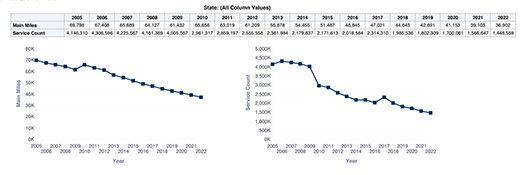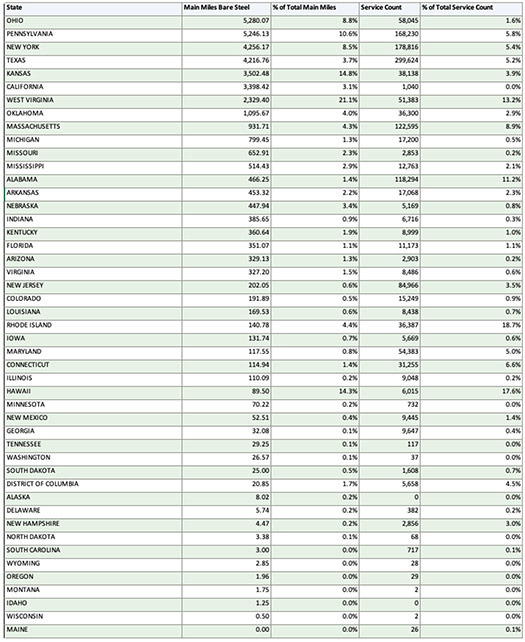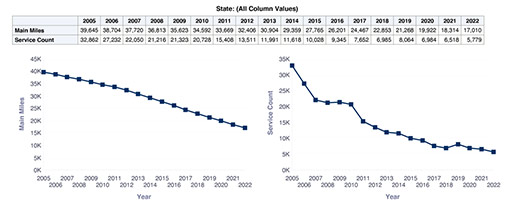December 2023, Vol. 250, No. 12
Features
DIMP-Related Replacement Work Continues in U.S.
Pipeline & Gas Journal staff report
(P&GJ) — While the amount of work to replace cast-iron and bare-steel pipe has declined in volume – following the implementation of the Gas Distribution Integrity Management Program (DIMP) in 2009 – there is still plenty of construction left to be done.
The federal Department of Transportation (DOT) estimated that at the end of 2022, 17,010 miles (27,375 km) of cast-iron and wrought-iron pipelines were still in service in the United States. The majority of those are in older eastern cities, such as New York, Boston, Washington, D.C. and Philadelphia. This represents quite a bit of headway since 2015, when there were 3,342 miles (5,378 km) still in the ground.
Among individual states, New Jersey led the way with 2,904 miles (4,674 km) of cast-iron and wrought-iron pipe — or 8.1% of its total — followed by New York’s 2,481 miles (3,993 km), 5%, Massachusetts’ 2,413 miles (3,883 km), 11%, Pennsylvania’s 2,259 miles (3,636 km), 4.2% and Michigan’s 1,616 miles (2,600 km), 2.6%.
Further DOT data indicate that replacement work — while having progressed steadily for more than a decade now — is far from complete. In 2015, there were still 27,771 miles of wrought and cast-iron gas distribution lines in service in the U.S., down from 39,342 miles (63,315 km) since 2005, a decrease of almost 30%.
According to the Pipeline and Hazardous Materials Safety Administration (PHMSA), about 98% of natural gas distribution pipelines in the U.S. were made of plastic or steel at the end of 2020. The remaining 2% is primarily cast-iron pipe.
Cast and wrought-iron pipelines were originally constructed to transport manufactured gas beginning in the 1870s and 1880s, with cast iron becoming more popular in the early 1900s.
In 1970, PHMSA began collecting data about gas pipelines mileage, categorized by pipe material type. In 1983, gas distribution pipeline operators reported 61,536 miles of cast iron and 4,371 miles of wrought iron pipe. Operators began submitting merged data for the two beginning in 1984.
In late 2009, PHMSA implemented pipeline safety regulations for managing the integrity of gas distribution pipelines. Operators were required to create DIMP by August of 2011. Operators are required to know the specific characteristics of their system and operating environment, to identify threats, evaluate the risk and take measures to reduce the risk.









Comments